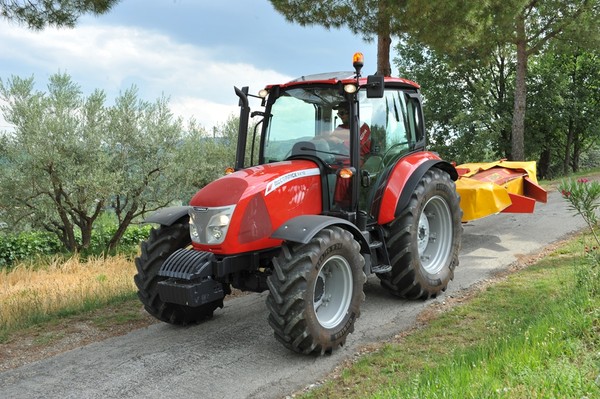
Safety in the field: importance of the learners license
Training for the correct use of agricultural machinery is a decisive factor for reducing the risk of accidents. A series of legislative measures issued beginning in 2008 and successively updated with a ministerial decree in May 2015 provides for a learners license for driving of some types of machinery. On an understanding with institutions and professional organizations, a CNR/Imamoter initiative calls for the startup of specific information and training activities
The field, meaning the worksite, inevitably involves risks of accidents, especially due to the really difficult conditions faced daily in circumstances such as operations on hilly terrain, mountainous land, mud, uneven ground and on slopes of varying degrees with tractor loads which are not distributed for balance and locations and the like. In these conditions, often difficult to plan for, what is needed is a good knowledge of the mechanical means being used and of the operational conditions in which the work is being performed. Already back in 2008, Legislative Decree 81/08 took up these problems and repeatedly cited the need for applying correct information and training for operators. Article 71 paragraph 7 especially named the need for the employer to apply measures required for the correct use of work equipment and Article 73 of the legislation dealt with training for the use of machinery and underscored special conditions which can be encountered in normal as well as unusual situations in the use of the machine. Years later, a State-Region Agreement was published in February 2012 to provide specific information on the procedure for issuing Drivers Qualifications and for identifying categories of machinery for which driver training is required. Specifically named in this State-Region Agreement were tractors and the various types of implements which can be front, rear and laterally mounted on them as well as towed equipment and front loaders. These specifications refer to conditions which are especially dangerous due to the tractor/implement combination which, with a driver aboard, can lead to instability which can and must be offset by correcting the hitch procedure and drive. Especially for driving on slopes indispensable information is essential to avoid the problem of rollover.
Contents of the courses
The Ministry of Labor issued Circular no. 34 in December 2014 based on INAIL (National Workers Insurance Institute) Guidelines on the studies and contents of courses to be intended for the ‟Qualifications for Driving Wheeled and Tracked Agricultural and Forestry Tractors.” The document covers the contents of the courses and provides information on what is required for the practical side with special emphasis on the description of “the field” for practicing driving. Also provided are pointers for the correct teaching these courses cited above. The practical driving course for wheeled tractors lasts a minimum of eight hours plus examinations on the theoretical and practical aspects of driving. A variation for the course on driving tracked tractors calls for a minimum of five hours plus plus a driving rest for those who have completed the sessions on wheeled tractors.
More recently, the Official Gazette published the Ministerial Decree of June 30, 2015 on the “Periodic General Revision of Agricultural Machinery and Equipment” according to Articles 111 and 114 of the Legislative Decree dated April 30, 1992 no. 285. In this document (Article 7) the original concepts have remained unaltered. Within this unclear setting, CNR/Imamoter, the National Research Council Institute for Agricultural and Earthmoving Machines, has intended to shed light by joining days of information and training organized with the regions, Public Health Departments and INAIL in collaboration with professional farmers’ organizations aimed at starting up “Training Courses for Teachers and Trainers” for dealing with specific “Drivers Certification” courses. The format for these training days are structured for providing teachers with the minimum information needed for conducting these courses, with special attention trained on the practical side. Numerous courses have already been set up and others are being organized.







